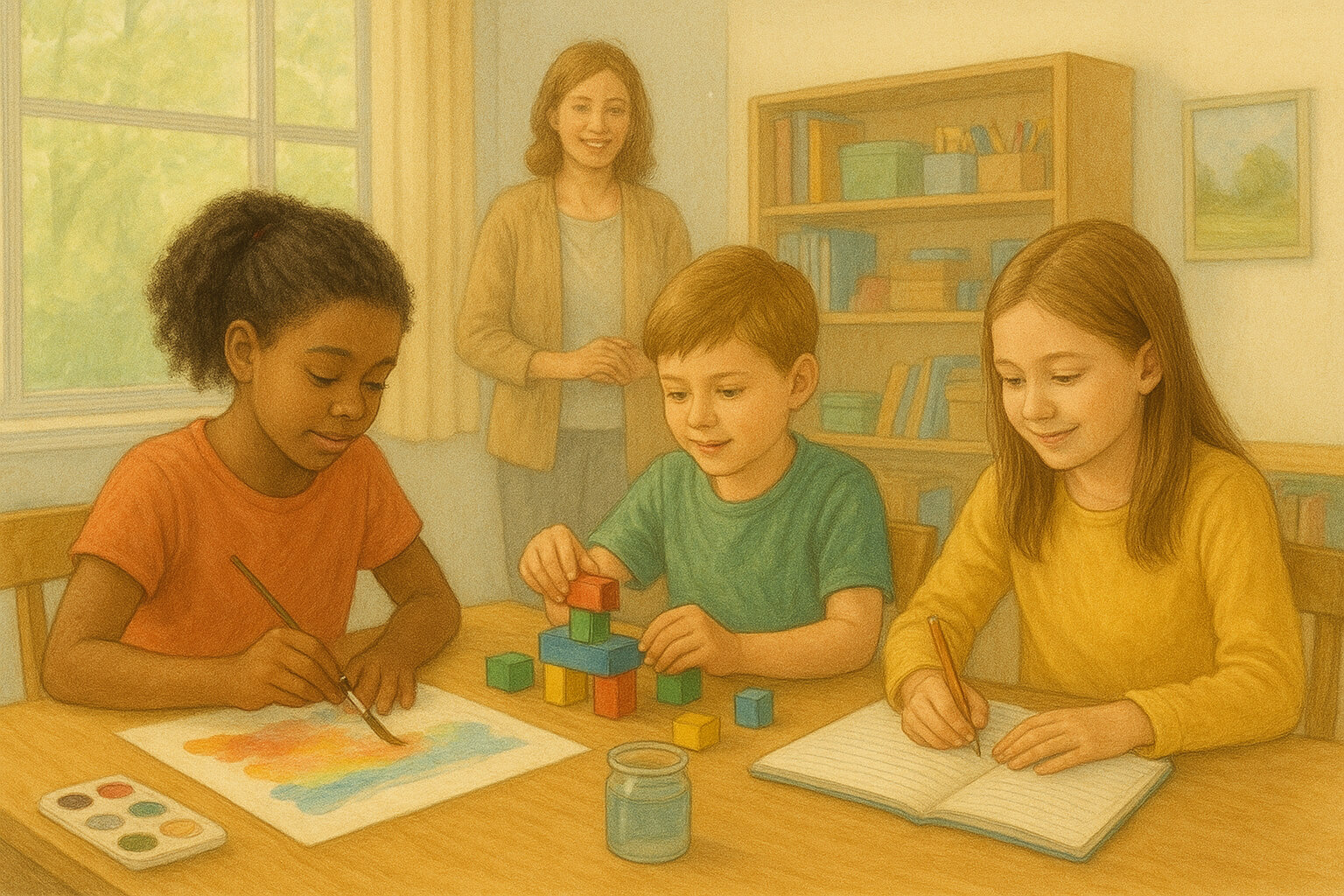In today’s rapidly evolving world, creativity isn’t just a talent for artists—it’s a core life skill. Whether solving complex problems, navigating challenges, or envisioning new possibilities, creative thinking empowers young people to thrive in uncertain environments.
By encouraging creativity early on, we equip children and teens not only to think outside the box—but to redefine the box entirely.
Why Creativity Matters
Creativity fuels more than imagination. It nurtures emotional intelligence, strengthens critical thinking, and fosters resilience. Through creative expression, young people learn how to communicate, cope with emotions, and connect with the world around them.
Brain research confirms that creative activities stimulate multiple areas of the brain—enhancing memory, attention, and cognitive flexibility.
Related read: The Importance of Play in Child Development shows how unstructured play naturally supports creative growth.
Ways to Foster Creativity
Encouraging creativity doesn’t require expensive tools or formal training. What it does require is space, permission, and encouragement.
1. Provide Open-Ended Opportunities
- Offer materials and experiences with no single solution—like building with blocks, storytelling with no script, or painting without rules. These open-ended tasks invite curiosity and experimentation.
- Let the process be the purpose—not the product.
2. Encourage Questioning
- Young minds are naturally inquisitive. When we welcome their “why” and “what if” questions with patience and interest, we keep that curiosity alive. Encourage them to wonder, challenge norms, and think divergently.
- Curiosity is the seed from which creativity grows.
- Reference: Harvard GSE – Encouraging Curiosity offers insights into nurturing young thinkers.
3. Limit Screen Time, Expand Real-Life Exploration
- Technology can inspire—but too much passive screen time can dull imagination. Balance it with real-world discovery: nature walks, messy art projects, cooking experiments, or hands-on building.
- Let them touch, build, dig, mix, and explore.
4. Celebrate Effort and Exploration
- Shift the focus from being “right” to being brave. Applaud the questions they ask, the risks they take, and the joy in trying something new. When we celebrate the journey—not just the outcome—young people become more resilient and self-assured.
- Growth comes from daring to try, not just from success.
- Related resource: The Impact of Arts Education on Child Development.
5. Model Creativity as Adults
- Children mirror what they see. When parents, teachers, and mentors openly explore their own creativity—writing, doodling, crafting, problem-solving—they send a powerful message: creativity is not only allowed, it's valued.
- Show them that imagination isn’t just for kids—it’s for life.
Creativity and Future Success
- Creativity isn’t confined to the arts. It’s a driving force in science, engineering, entrepreneurship, medicine, and countless other fields. It fuels innovation, helps us adapt to change, and enables us to find solutions no one’s tried before.
- In a world where many jobs of the future don’t yet exist, creativity will be the currency of adaptability.
- Reference: World Economic Forum – Future of Jobs Report 2023 names creativity among the top skills in demand globally.
How Communities Can Support Creativity
Creativity thrives in environments that give it space to breathe:
- In Schools: Project-based learning, arts integration, and interdisciplinary thinking foster creative growth.
- In Communities: Makerspaces, libraries, and community arts programs provide hands-on opportunities for discovery.
- At Home: Let children lead their play, embrace boredom as a spark for invention, and expose them to a wide range of experiences.
Creative children grow into innovative adults—but they need communities that nurture their potential.
Final Thoughts
Fostering creativity isn’t about grooming artists—it’s about nurturing adaptable, confident, and imaginative thinkers who can face the future with courage and curiosity.
When we empower young people to explore, imagine, and create, we’re not just helping them succeed—we’re helping them shape a better, more innovative world.
Let’s raise a generation that isn’t afraid to color outside the lines—because that’s where the real magic happens.
